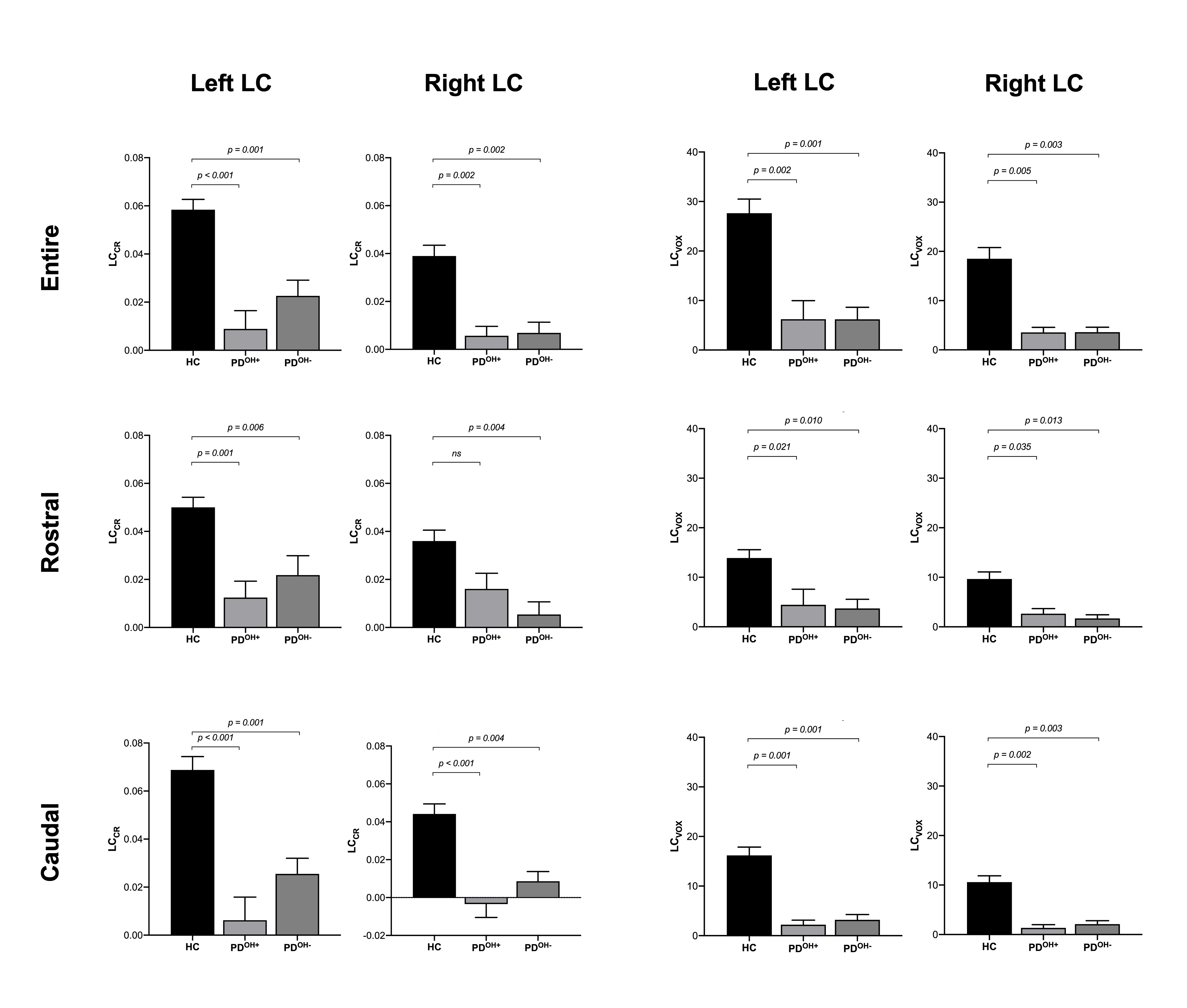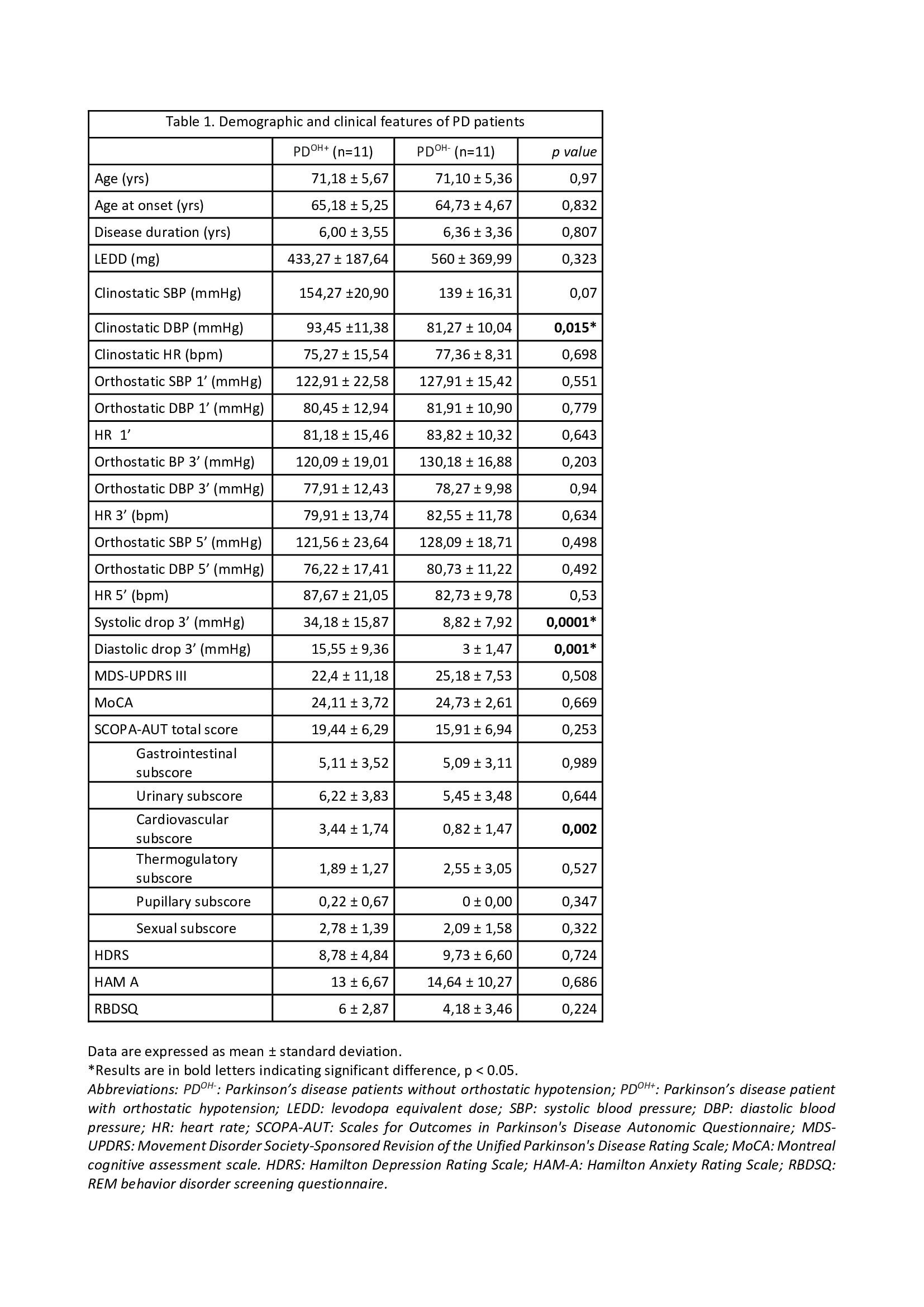Category: Parkinson's Disease: Neuroimaging
Objective: To test whether degeneration of the Locus Coeruleus (LC) is associated with Orthostatic Hypotension (OH) in Parkinson’s disease (PD).To test whether degeneration of the Locus Coeruleus (LC) is associated with Orthostatic Hypotension (OH) in Parkinson’s disease (PD).
Background: OH is a common and debilitating non-motor symptom in PD but the mechanisms underlying its development remain largely elusive. Peripheral and central noradrenergic denervation are both likely to play a key role. LC is the main noradrenergic nucleus of the brain and its early degeneration in PD has been put in relation with a variety of non-motor symptoms, including OH, but with inconsistent results.
Method: A total of 22 cognitively intact PD patients and 52 age-matched healthy volunteers underwent 3T magnetic resonance (MRI) with neuromelanin-sensitive T1-weighted sequences. For each subject, a template space-based LC-MRI was used to calculate LC signal intensity (LC-contrast ratio) and the estimated number of voxels (LC-Vox) belonging to LC. In a case-control study we compared the LC-MRI parameters in 11 PD patients with OH (PDOH+) versus 11 without OH (PDOH-) (matched for sex, age and disease duration) using one-way analysis of variance followed by multiple comparison tests. We also tested for correlations between subject’s LC-MRI features and orthostatic drop in systolic blood pressure (SBP).
Results: PDOH- and PDOH+ did not differ significantly (p>0.05) based on demographics and clinical characteristics, except for blood pressure measurements and SCOPA-AUT cardiovascular domain (p<0.05) [Table1]. LC-contrast ratio and LC-Vox measures were significantly lower in PD compared to HC, while no differences were observed between PDOH- and PDOH+ [Figure1]. Additionally, no correlation was found between the LC-MRI parameters and the orthostatic drop in SBP or the clinical severity of autonomic symptoms (p>0.05). Conversely, RBD symptom severity negatively correlated with MRI-LC parameters [Figure2].
Conclusion: Our results failed to indicate a link between the LC -MRI features and the presence of OH in PD but confirmed a marked alteration of LC signal in PD patients.
To cite this abstract in AMA style:
G. Palermo, G. Bellini, A. Galgani, F. Lombardo, N. Martini, R. Morganti, D. Paoli, S. de Cori, FS. Giorgi, R. Ceravolo. Neurogenic Orthostatic Hypotension in Parkinson’s Disease: Is there a role for Locus Coeruleus Magnetic Resonance Imaging? [abstract]. Mov Disord. 2023; 38 (suppl 1). https://www.mdsabstracts.org/abstract/neurogenic-orthostatic-hypotension-in-parkinsons-disease-is-there-a-role-for-locus-coeruleus-magnetic-resonance-imaging/. Accessed December 21, 2025.« Back to 2023 International Congress
MDS Abstracts - https://www.mdsabstracts.org/abstract/neurogenic-orthostatic-hypotension-in-parkinsons-disease-is-there-a-role-for-locus-coeruleus-magnetic-resonance-imaging/


